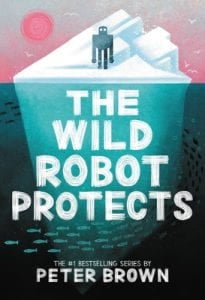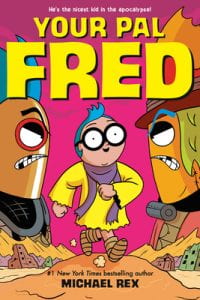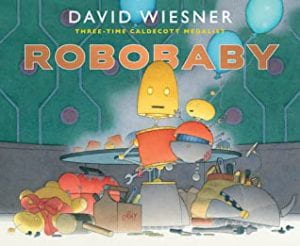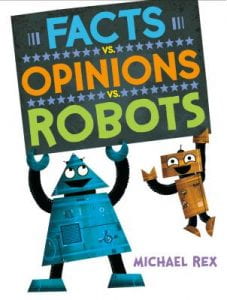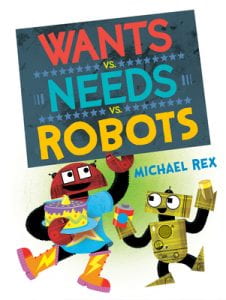 Rex, Michael. Wants vs. Needs vs. Robots. Illustrated by Michael Rex. Nancy Paulson Books, 2023. 978-0-593-53009-2. Unpaged. $18.99. Grades K-2.
Rex, Michael. Wants vs. Needs vs. Robots. Illustrated by Michael Rex. Nancy Paulson Books, 2023. 978-0-593-53009-2. Unpaged. $18.99. Grades K-2.
Wants vs. Needs vs. Robots teaches children the difference between wants and needs. The book uses the robots to show the things that the robots need such as arms, oil, and legs. It also shows the things the robots want such as jelly bean tacos and unicorn hats. The book shows one robot putting his wants ahead of his needs and what happens to him, after which it goes back and shows the robot showing the difference between his wants and needs. It also shows how the robot gets what he wants without sacrificing his needs.
THOUGHTS: Overall, this would be a great book for an elementary guidance counselor to use with young students discussing wants vs. needs. Students who are obsessed with robots might want to read this due to the characters within the book, but this book will be most effective when used with a lesson.
Picture Book

